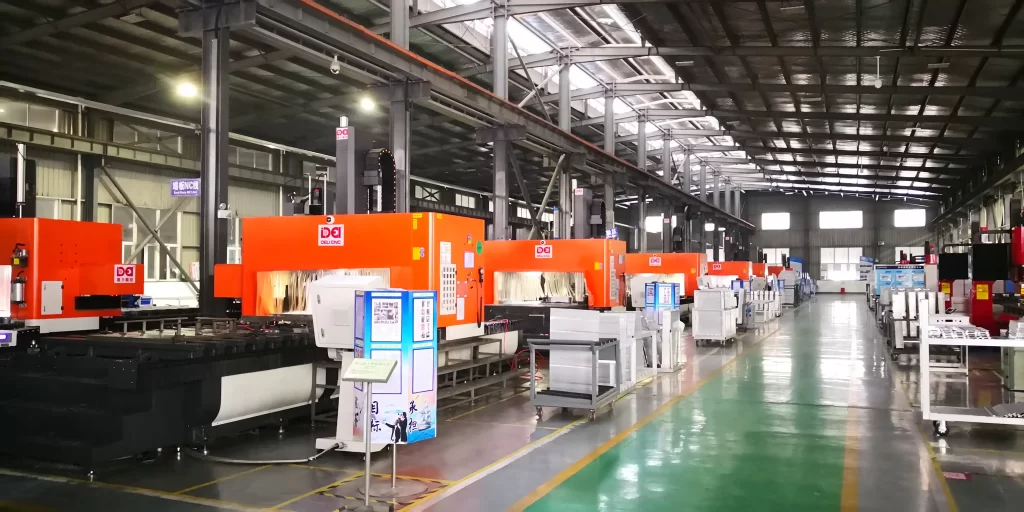10 Practical Tips to Improve CNC Machining Efficiency

CNC machining powers modern manufacturing. Improving CNC machining efficiency slashes costs, speeds up delivery, and sharpens your competitive edge. This guide shares 10 practical tips, from refining tool paths to leveraging simulation software, to elevate your process. Start optimizing now!
Tip 1: Boost CNC Machining Efficiency with Tool Path Optimization
Advanced CAM software like Mastercam creates tool paths tailored to part geometry, minimizing idle moves and boosting CNC machining efficiency. Grouping tasks like drilling or milling cuts tool changes, speeding up production cycles.
Key Tip: Align CAM software with machine specs to avoid path errors or collisions.
Tip 2: Fine-Tune Cutting Parameters
Spindle speed, feed rate, and depth of cut drive machining speed and tool life. Start with manufacturer recommendations, then tweak for materials. Use high speeds (>10,000 RPM) for aluminum; keep stainless steel slower to prevent overheating. Check chips for tight, curled shapes.
Key Tip: Monitor chips to prevent tool damage from aggressive settings.
Tip 3: Select High-Performance Tools
Carbide or coated tools (like TiN or AlTiN) handle high cutting speeds and extend tool life, reducing downtime. For aluminum, DLC coatings prevent chip buildup, improving CNC machining efficiency.
Key Tip: Balance high-performance tool costs with production volume and precision needs.
Tip 4: Adopt Rapid Clamping Systems
Quick clamping systems cut setup time, maximizing cutting time. Modular fixtures suit small-batch, varied production, while zero-point clamping delivers micron-level precision for fast setups.
Key Tip: Confirm clamping system compatibility with your machine and check positioning regularly.
Tip 5: Automate CNC Programming
CAD/CAM integration turns 3D models into tool paths quickly. Macro programming automates repetitive tasks, and parametric programming adjusts for part sizes, saving time and boosting CNC machining efficiency.
Key Tip: Test macro programs thoroughly before production to avoid variable errors.
Tip 6: Maintain Machines Regularly
Routine maintenance boosts CNC machining efficiency by ensuring precision and reliability. Inspect servo motors, hydraulic systems, and spindle vibration monthly (errors under 0.01mm). Keep guide rails and ball screws clean and lubricated.
Key Tip: Follow manufacturer lubricant and maintenance schedules to protect components.
Tip 7: Optimize Machining Allowance
Near-net-shape blanks reduce material removal. For irregular blanks, adaptive machining adjusts parameters dynamically. Leave 0.5-1mm for finishing after roughing to ensure CNC machining accuracy.
Key Tip: Use machine sensors for real-time feedback to maintain precise allowances.
Tip 8: Leverage Multi-Axis Machining
Four- or five-axis machining handles complex parts in one setup, cutting re-clamping time and errors. Advanced CAM software optimizes tool paths, enhancing CNC machining efficiency.
Key Tip: Assess part complexity and software capabilities before investing in multi-axis systems.
Tip 9: Enhance Machining Reliability
Optimize coolant use to minimize thermal distortion. Monitor tool wear visually or with equipment. Maintain shop temperatures at 20-25°C for stability and improved CNC machining efficiency.
Key Tip: Calibrate sensors regularly for accurate data and reliable decisions.
Tip 10: Validate with Simulation Software
Software like Vericut or PowerMill simulates machining, catching collisions and refining tool paths to improve CNC machining efficiency. Adjust speeds and feeds upfront for error-free first runs.
Key Tip: Match simulation parameters to your machine, tools, and fixtures for accurate results.



